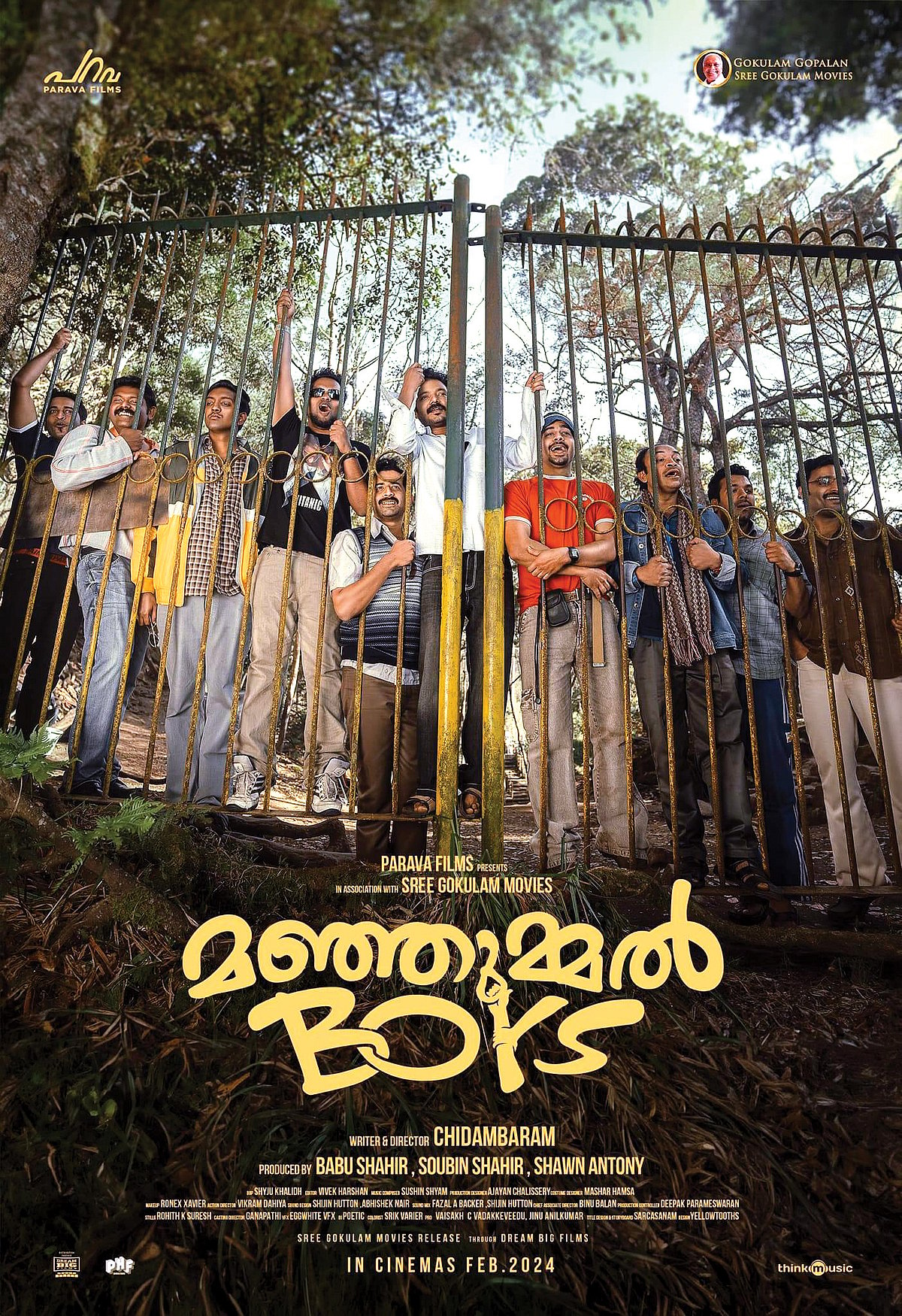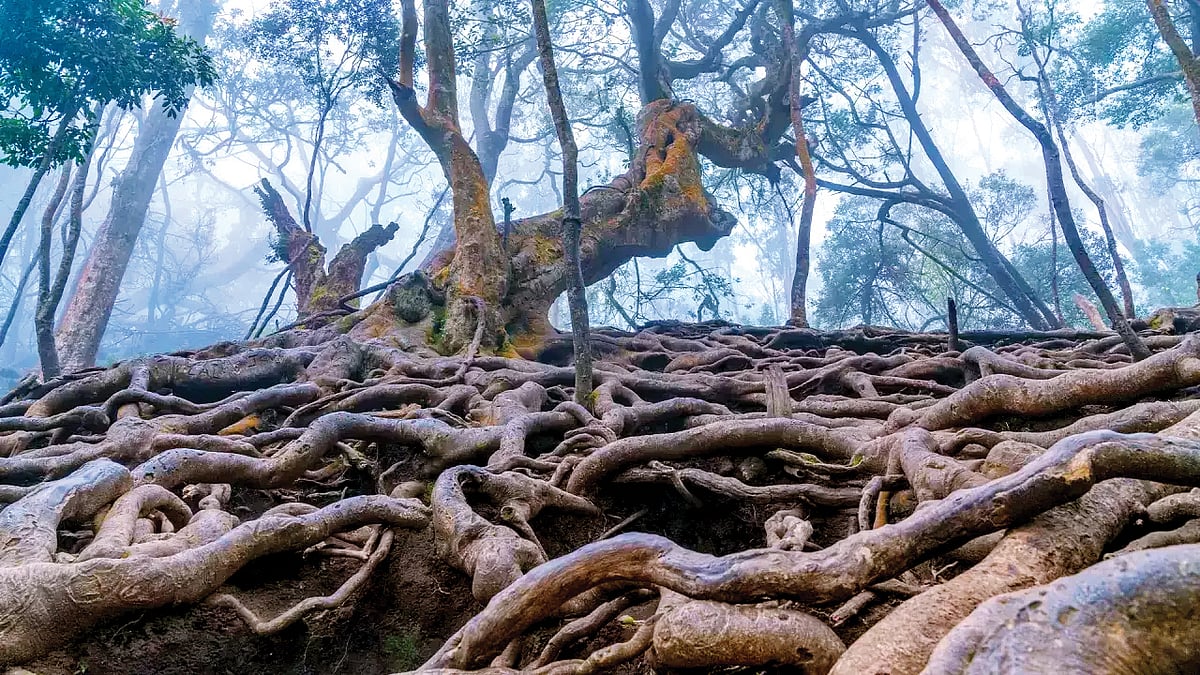When Kodaikanal girls met 'Manjummel Boys'
In the hill town of Tamil Nadu where 'nothing ever happens', there was recently much drama post the release of Chidambaram's Malayalam blockbuster

In the hill town of Kodaikanal in Tamil Nadu where I live and where ‘nothing ever happens’, there was recently much drama post the release of Manjummel Boys, the Malayalam blockbuster directed by Chidambaram and set (mostly) in Kodaikanal.

A Facebook post by writer and novelist Krishna Shastri Devulapalli found its way to a ‘Kodishare’ WhatsApp group I am part of and stirred up a hornet’s nest. The post was a rant, a list of reasons why he would not watch the film, primarily because gangs of (unsupervised) boys can never be up to any good.
It then went on to list the ways in which Kodaikanal was withering away as a result of irresponsible tourism. (Shastri’s in-laws are celebrated rosarians, long-time residents of Kodai who have been nurturing its flora and fauna for nearly 50 years.)
Several people on the group echoed his sentiments. None of them had watched the film.
I too was concerned about tourist-related abuse in Kodaikanal—the traffic and garbage situation over weekends, the huge buses illegally parked almost everywhere, sometimes blocking access to homes—but first, I wanted to watch the film. I gathered my little gang of four girlfriends and off we went to watch it at Vellaippan Theatre.
Also Read: The magic of Kodaikanal
We came away feeling pride in Kodaikanal, which has been beautifully shot. We agreed that it was a good film, not outstanding. But above all, we saw it as a cautionary tale.
Manjummel Boys is a survival drama based on true events that occurred in 2006. A group of 11 'boys' (really, men) from a village called Manjummel in Ernakulam, Kerala went on a trip to Kodaikanal in Tamil Nadu, and one of them slipped into a chasm in a tourist spot called the Devil’s Kitchen (now Gunaa Caves).

I realise that Shastri’s post is less vicious than Tamil film writer, author and literary critic B. Jeyamohan’s blog post titled ‘Manjummel Boys: A frenzy of alcoholic rowdies’. His take of ‘Kerala boys going rogue in Tamil Nadu’ faced severe backlash from the media and the Kerala film industry.
It was a classic case of what he said being obscured by how he said it. For instance:
It will be good if this movie creates awareness about these gangs in Tamil Nadu and Karnataka. The police should directly treat them as criminals. Never support in any way. Sometimes it is good that they get stuck somewhere and die. Our forests will be saved. It is a natural punishment given to them by nature.B. Jeyamohan, Tamil author and critic
(For the record, he did watch the film.)
The Devil’s Kitchen, the spot where the incident occurred was popularised by the 1991 movie Gunaa, in which Kamal Haasan plays a deranged stalker who kidnaps and holds an heiress hostage in this cave, while hoping to marry her. The success of this movie had many thronging to the spot, enough to rename it Gunaa Caves.
The name stuck, despite a series of unfortunate events and the Forest Department having a hard time coping with footfalls. The Tamil Nadu government even closed the cave for a while, as tourists violated safety instructions and got into accidents, just like the Manjummel Boys.
The caves' ‘vampire reputation’ is an added lure.
According to official reports, between 12 and 16 boys/men have fallen into the deep chasm, never to be found. The Manjummel Boys story is the only instance of a boy being rescued from there, only because one of his mates volunteered to go down 80 feet into the cavern and physically lift his friend back up after the fire guard appointed for the job refused to do so.
Jo Jeeta Wohi Sikandar—a Hindi movie featuring residential schools and their cycling gangs—was also shot in Kodaikanal around the same time as Gunaa, but somehow it never started a cycling movement. It’s clear that Kamal Haasan singing lullabies to his captive amid lit candles in a spooky cave did more for Kodaikanal than Aamir Khan demonstrating the sheer will to win a cycling race against all odds.
The mountains are not my natural habitat.
I grew up in Bombay, which is still home for me, but as a child, every summer my father would drag us to one hill station or another, north or south (a few times east). The hill towns were lovely and smelt nice, but they were always crowded, there was a line for everything and we never seemed to have the right shoes or clothes.
As a child, I could not imagine that these towns were also ‘home’ to some people. Silver Cascade in Kodaikanal, Kempty Falls in Mussoorie, Bhagsu in Kangra, were all duly recorded on our HotShot camera before we left for the plains.
The people who stayed, however, bought bigger and bigger pieces of land, built bigger and bigger houses (some of which became homestays) and cut more and more trees to build these houses, hotels and access roads. This was not ‘tourism’, this was ‘development’. This was a gang of (supervised) boys up to no good.
I moved out of Goa, where I cowered at home over weekends waiting for the hordes from Bombay, Delhi or Hyderabad to leave.
Here in Kodai, it’s a rinse–repeat of the same.
In both places, I have been witness to local sentiments against the tourist community for noise making, littering and drinking in their land. I guess there is a certain equanimity one needs to cultivate when one lives in a place that thrives on tourism, but for most of us, it is a state of constant ambivalence. You need them for the economy, but they also wreck the habitat.
***
Rather than blaming a film (or films) for unleashing irresponsible tourism, might we not consider education and awareness?
By their own admission, the traffic department, the waste management and the police department are hugely understaffed, particularly to take on the weekend rush. Instead of fighting for ramping up their numbers and weaving in more regulations, we are fighting for tourists to stop coming to a tourist spot — not realising that for some, just the memory of two nights of wearing jackets and mufflers and taking photos against a backdrop of pine forests and vanilla clouds on blue skies might make the rest of their summer a little more bearable.
My neighbouring plot, which was a haven for bison and other flora and fauna, has been stripped clean of every tree in the last five months. I have no idea if a 10-bedroom monstrosity is coming up there or if the plot will be spilt into six villas as is the current fad here. I am only a tenant with neither the desire (nor the means) to own any part of these hills. But it still makes me sad.
It hasn’t rained in two months and that’s unusual for Kodaikanal. There is a forest fire almost every day. Climate change is real, and that problem is bigger than weekend traffic jams caused by large-axle buses.
Lalita Iyer is an author and journalist
Follow us on: Facebook, Twitter, Google News, Instagram
Join our official telegram channel (@nationalherald) and stay updated with the latest headlines